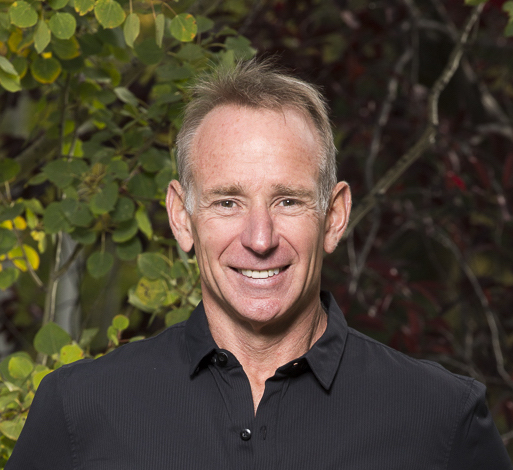The Covid19 Work AT Home Struggles
- Ed Harrold

- Apr 21, 2020
- 4 min read
Updated: Dec 24, 2020
Learning To Adapt While Staying Productive & Caring For Loved Ones

Before Covid19 came along and changed life as we know it, working at home (or remote working) was becoming a popular solution for many individuals and organizations. And a profitable one at that.
For organizations, research was revealing a 13% increase in performance – almost an extra day of output per week. For individuals, the average person commutes 100 hours per year. Not only is that a savings to your wallet, it provides more work-life balance for self-care routines, family and social gatherings.
But, that’s when our kids were at school. How do we manage it now? Talk about "adaptability." This is it in its' extreme version as life changed on a dime.
According to the Institute for Health and Human Performance,
"75 percent of careers are derailed for reasons related to emotional competencies, including inability to handle interpersonal problems; unsatisfactory team leadership during times of difficulty or conflict; or inability to adapt to change or elicit trust."
The soft skill related to "adaptability" is the science of resiliency. The more resilient a person is, the less likely they are to feel the effects of stress and burnout. With some tools and skills, we can easily adapt to change without compromising our health and well-being . . . our productivity & performance . . . or the well-being of our children too!
Prior to Covid19, adaptability (or the lack thereof) was portraying itself in organizational change, accelerated technology, switching gears and lots of distraction throughout our workday. For those of us working at home with kids or ailing parents, distraction has become the new norm. If that wasn't enough, family structures are typically a place where we experience lots of emotional triggers that heighten anxiety and/or depression states. With the current "stay at home" model, there is nowhere to hide!
So, let's flip the lens on how we're looking at this. The reality is we can never hide from our thoughts and emotions. We can squash them down, medicate them, exercise them into exhaustion, or drink or eat them into silence; but, they're always there hiding in our sub-conscious mind. I offer you that NOW is an opportunity to take a look at the belief systems being triggered by the "new normal" in an effort to heal them once and for all.
Stress is our “perception” of the moment, which means it’s how we think about a situation that’s been programmed into our subconscious mind from previous experiences. By changing the beliefs system associated with the experience, we transform root cause and make powerful changes to our inner and outer world.
In times of stress, thoughts move at a rapid pace while our body begins to breathe more rapidly, rushing the inhalation and exhalation, signaling a reaction of “fight or flight” stress physiology. In stress physiology, we live in our sub-conscious mind responding the current events based on previous programming. Our ability to "adapt" and be resilient to the present moment requires a strong response from our Parasympathetic Nervous System and vagus nerve. The key to handling the emotions that come from change is building a resilient mind and body through exhalation; the resilience modulator.
Learning the proper way to exhale is a major key to personal growth and transformative cognitive and emotional states. The exhale has a cooling effect to some degree. It’s a point of release, a letting go of the past so we can be in the present.
Here's a BodyMindBusiness exercise to help you transform a mental model that's causing anxiety and stress towards staying productive in the midst of taking care of your loved ones.
The Business Of BE'ing Within Exercise
Using the ocean-sounding breath, fill the lungs with a complete 100 percent inhalation and pause. Now release 50 percent of the exhale out of lungs, and pause for a moment. Release the remaining 50 percent, and pause. Repeat several rounds. Do not rush your inhale.
After mastering this exhalation, move up to one-thirds. Inhale a full 100 percent inhale and pause; release one-third of energy from the lungs and pause; now release another one-third and pause, and finally the last one-third and pause. Repeat for several rounds until you feel your mind and body relaxing.It's in this state, we can become the "witness" of the mental mindset replaying itself and winding you up.
Begin to observe your thoughts; don't participate in them. Stay with your breath as you diaphragmatically breathe with an ocean sound. If you feel your heart rate rise and it's a struggle to remain the "witness" move back into the practice above. If you are remaining calm, create a mental model more supportive of you and the current situation. An example might be, "I feel safe creating boundaries for myself that support my love for myself, my family and my responsibilities at work."
Our inhale is the process of intention and the exhale is the manifestation of the inhale. So, using your new mindset, inhale as you say "I feel safe". Pause at the top of the inhale. Exhale saying "creating boundaries for myself that support my love for myself, my family and my responsibilities at work." And yes, that's a mouthful on the exhale. That's the point. The exhale is where we solidify the intention into manifestation cognitively while the body is getting the parasympathetic qualities of a nice long exhale!
Remember, our thoughts and emotions determine our bodies physiology and biochemistry. We go to the BODY first to transform the MIND. When the body is in a state of relaxation, we can tackle just about anything in the mind: body OVER mind psychology.
To learn more, grab a copy of my new book,
Get 20% OFF Your Next Order With Code: ED20
Go BE Great!










Comments